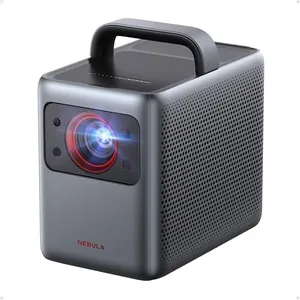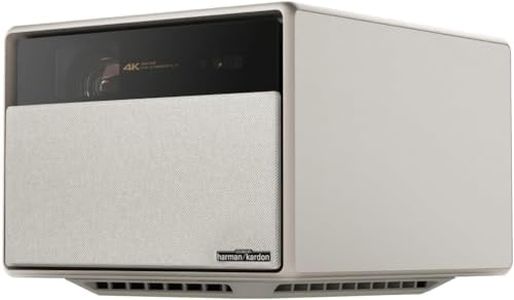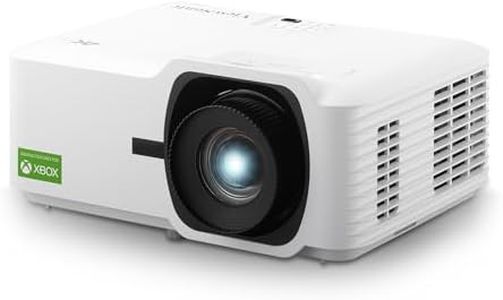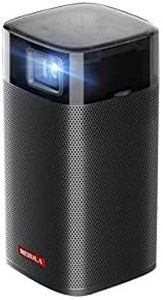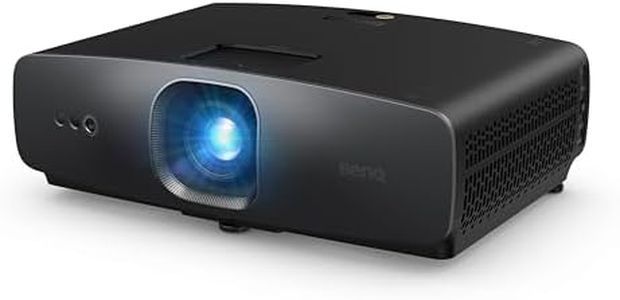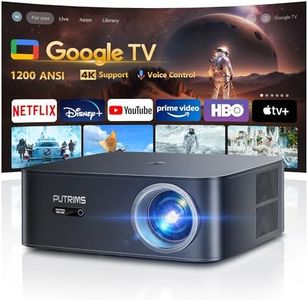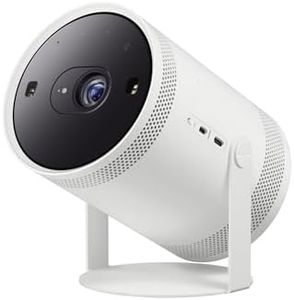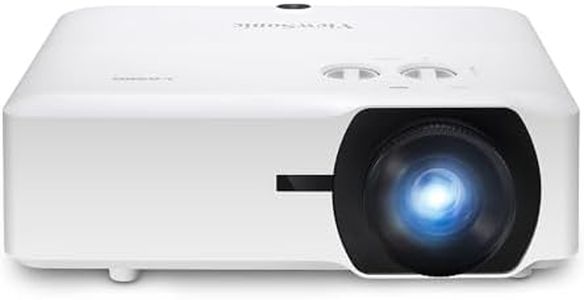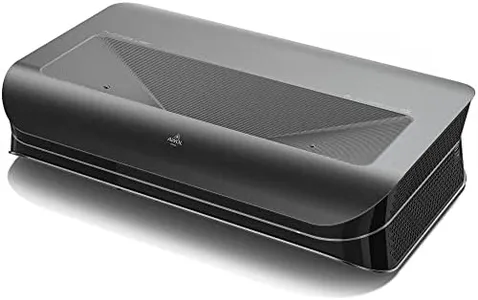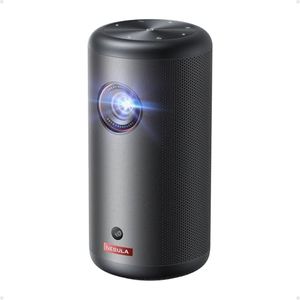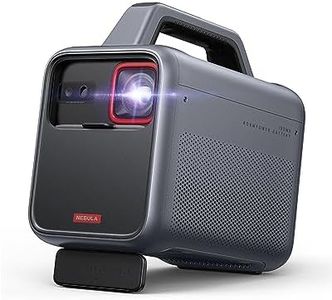We Use CookiesWe use cookies to enhance the security, performance,
functionality and for analytical and promotional activities. By continuing to browse this site you
are agreeing to our privacy policy
10 Best Projector Tvs
From leading brands and best sellers available on the web.By clicking on a link to a third party's website, log data is shared with that third party.
Buying Guide for the Best Projector Tvs
Choosing the right projector TV is about understanding the space where you'll use it, the kind of content you enjoy, and how you'll set it up. Rather than just chasing the biggest image, you want to match your projector TV to your room size, lighting conditions, and how you plan to use it—whether that's for movies, sports, games, or presentations. Balancing these considerations will help you enjoy every viewing without headaches, blurry images, or frustrations with setup.Brightness (Lumens)Brightness, measured in lumens, tells you how much light the projector can produce. This is important because it affects how well you can see the image in different lighting conditions. In a dark room, a lower lumen number can be fine, while in a room with some ambient light, a higher lumen projector is necessary for a clear image. Projectors in the 1,500–2,500 lumens range work best for dark or fully controlled rooms, while 3,000 lumens and above are better if you can't darken the space or want to use it during daylight. Think about where you’ll use your projector: if it’s in a living room with windows, aim for higher lumens; if it’s a dedicated home theater, you might manage with less.
ResolutionResolution relates to the detail and sharpness of the projected image. A higher resolution means more pixels, resulting in clearer images, which is especially noticeable on large screens. Common segments include HD (720p), Full HD (1080p), and 4K (2160p). For casual viewing or smaller screens, HD can be enough, but for most modern content and larger image sizes, Full HD is the standard minimum, while 4K provides the sharpest images for enthusiasts and those sitting closer to the screen. Match your choice to how picky you are about image clarity and how big your picture will be.
Contrast RatioContrast ratio describes the difference between the brightest white and the darkest black a projector can show. A higher contrast ratio means more depth and vibrancy in images, making movies and games look richer. Projectors with lower ratios tend to look more washed out, especially in dark scenes. Standard ratios may start around 2,000:1, while top-end models offer 10,000:1 or higher. If you love cinematic experiences with deep blacks, go for a higher contrast ratio, but for general use, mid-range contrast may be enough.
Throw Distance and Screen SizeThrow distance tells you how far the projector needs to be from the screen to create a certain picture size. Some projectors need to be several feet away, while short-throw or ultra-short-throw models can sit just inches from the wall. Regular throw projectors are good for large rooms where you have space behind the viewers, but short-throw projectors are great for smaller spaces or if you want to place the device close to the screen. Check your room size and where you can install the projector to determine which type fits best.
Input LagInput lag describes the delay between sending a signal to the projector (like pressing a button on a game controller) and seeing the reaction on the screen. This matters most for gamers who want fast responses. Input lag under 40 milliseconds is good for casual gaming, while under 20 milliseconds is preferred for serious play. For movies or TV, input lag isn’t really noticeable, so you can worry less about this spec unless gaming is a priority.
Built-in AudioSome projector TVs include built-in speakers, which can be handy if you don’t want extra equipment. However, built-in speakers often lack power and sound quality, making them suitable for casual viewing or presentations but not ideal for movie nights. If you are audio-focused, consider connecting your projector to an external sound system for richer, more immersive sound, but for convenience or portability, built-in audio might suffice.
Port Options and ConnectivityThe types of ports and connectivity (like HDMI, USB, Wi-Fi, Bluetooth) the projector offers determine what devices you can connect, such as streaming sticks, game consoles, or laptops. More ports give you more flexibility. For a permanent home theater, make sure your projector has enough HDMI ports for your media players, or wireless options if you want to connect without cables. Decide based on your current and future devices for hassle-free connections.
Lamp LifeLamp life is the expected lifespan of the projector's light source, given in hours. Traditional lamps might last 2,000–5,000 hours, while newer laser or LED-based models can last up to 20,000 hours or more. Longer lamp life means less maintenance and lower replacement costs. If you want to watch a lot of content without worrying about changing bulbs, consider projectors with longer lamp life, especially if you plan to use your projector often.


